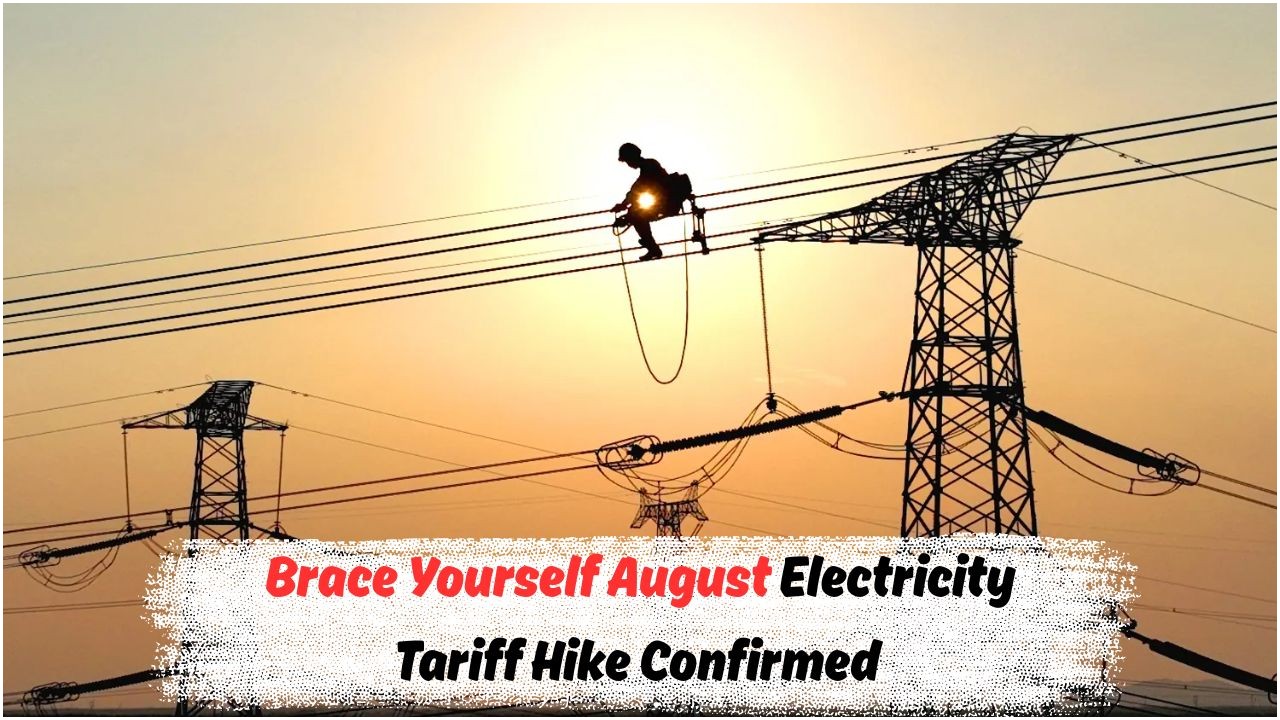August 1 Tariff Hike Alert: As South Africans brace for the latest electricity tariff increase, many are left wondering how much their power bills will rise this month. The National Energy Regulator of South Africa (NERSA) has approved a tariff hike effective from August 1, impacting households across the country. With the cost of living already on the rise, this adjustment comes as an additional burden on the average consumer. From bustling Johannesburg to the scenic Western Cape, citizens are preparing to adjust their budgets to accommodate these changes. Understanding the intricacies of this hike and its implications on your monthly expenses is essential for effective financial planning.
Understanding the August 1 Electricity Tariff Hike
The electricity tariff hike announced for August 1 is part of a broader strategy to address the financial challenges faced by Eskom, South Africa’s primary electricity supplier. Over the past few years, Eskom has been grappling with financial instability, necessitating increases in tariffs to ensure consistent energy supply across the nation. This year’s increase is expected to be around 15%, a significant jump that will affect both residential and commercial users. As South Africans continue to experience frequent load shedding, the need for sustainable solutions to power distribution and management becomes more pressing. For consumers, this means closely monitoring their energy consumption to mitigate higher costs.
- Conserve Energy: Simple actions such as turning off lights when not in use can significantly reduce electricity usage.
- Invest in Energy-efficient Appliances: Switching to energy-saving bulbs and appliances can cut down on consumption.
- Consider Alternative Energy Sources: With solar installations becoming more affordable, they present a viable option for reducing reliance on the grid.
- Monitor Usage: Regularly check your electricity meter to stay informed about your consumption patterns.
Impact of Tariff Increases on South African Households
The impact of the tariff hike will be felt differently across various income groups in South Africa. Lower-income households, which spend a larger proportion of their income on utilities, are likely to feel the pinch more acutely. With this increase, the average monthly electricity bill could rise by several hundred rands, depending on usage. This means that families may have to make tough decisions about their spending, prioritizing essential utilities over other expenses. Additionally, small businesses may face increased operational costs, potentially affecting their pricing and profitability. For many, the tariff hike serves as a harsh reminder of the ongoing energy challenges faced by the nation.
| Household Type | Average Monthly Consumption (kWh) | Current Cost (R) | New Cost (R) | Increase (R) | Percentage Increase |
|---|---|---|---|---|---|
| Low-Income | 200 | 400 | 460 | 60 | 15% |
| Middle-Income | 500 | 1000 | 1150 | 150 | 15% |
| High-Income | 1000 | 2000 | 2300 | 300 | 15% |
Strategies to Mitigate the Impact of Rising Electricity Costs
Given the inevitable rise in electricity costs, individuals and businesses alike are seeking strategies to manage their expenses more effectively. Adopting energy-efficient practices is crucial in reducing overall consumption and, consequently, electricity bills. From simple changes such as unplugging devices when not in use to more substantial investments like installing solar panels, these strategies can make a significant difference. Encouraging the use of smart meters can also help monitor usage patterns and identify areas for improvement.
 Thousands Stranded by August NSFAS Blockages: Discover the Viral R5,200 WhatsApp Hack to Solve It
Thousands Stranded by August NSFAS Blockages: Discover the Viral R5,200 WhatsApp Hack to Solve It
- Utilize Smart Home Technology: Smart thermostats and meters can help regulate energy use more efficiently.
- Regular Maintenance: Ensure heating and cooling systems are well-maintained to prevent energy wastage.
- Government Rebates: Look for government incentives or rebates for adopting renewable energy sources.
Future Outlook for Electricity Tariffs in South Africa
While the current tariff hike is a cause of concern for many, understanding the future landscape of South Africa’s electricity pricing is equally important. Eskom’s ongoing financial recovery plan suggests that further increases may be on the horizon. However, the government is also exploring various measures to make clean and affordable energy more accessible to all citizens. This includes investments in renewable energy projects and enhancing the efficiency of existing infrastructure. For consumers, staying informed about these developments can aid in better financial planning and decision-making.
- Renewable Energy Initiatives: Increasing investments in wind and solar energy.
- Infrastructure Improvements: Upgrading power plants and distribution networks.
- Policy Reforms: Implementing regulations to encourage energy conservation.
What You Need to Know About the Latest Tariff Hike
With the August 1 tariff hike now in effect, it is crucial for South Africans to understand its implications. The increase is part of efforts to stabilize Eskom’s finances and ensure a reliable power supply. However, this comes at a cost to consumers, who must now navigate higher electricity bills. Staying proactive by adopting energy-efficient practices and exploring alternative energy sources can alleviate some of the financial burdens. Additionally, keeping abreast of government initiatives and potential rebates can further aid in managing expenses.
FAQ Section:
- Why is there a tariff hike on August 1? The tariff hike is part of Eskom’s financial recovery plan to ensure consistent power supply.
- How much will my electricity bill increase? On average, bills are expected to rise by about 15%, depending on consumption.
- What can I do to reduce my electricity bill? Implement energy-saving measures and consider alternative energy sources like solar power.
How to Prepare for Future Tariff Increases
As South Africans adjust to the new electricity tariffs, preparing for potential future increases is advisable. This can involve investing in renewable energy solutions, such as solar panels, or adopting more energy-efficient technologies at home. Additionally, staying informed about policy changes and government initiatives aimed at stabilizing electricity costs is crucial. By taking proactive measures, consumers can better manage their financial resources and reduce the impact of future tariff hikes on their monthly budgets.
| Strategy | Initial Cost | Potential Savings |
|---|---|---|
| Install Solar Panels | High | Significant long-term |
| Use Energy-efficient Appliances | Moderate | Moderate to high |
| Smart Home Technology | Moderate | High |
| Regular Appliance Maintenance | Low | Moderate |
Practical Tips for Managing Electricity Costs
To effectively manage the rising electricity costs, consider the following practical tips. First, conduct an energy audit of your home to identify areas where you can reduce consumption. Next, regularly check your appliances for energy efficiency and replace older, less efficient models. Additionally, consider joining community initiatives focused on energy conservation, which can provide support and resources for reducing electricity usage. By staying proactive and informed, South Africans can navigate the challenges posed by the August 1 tariff hike and future increases.
FAQ Section:
How can I check my energy usage? Use smart meters or check your monthly electricity bill for detailed usage information.
Are there government incentives for using renewable energy? Yes, there are various rebates and incentives available for adopting renewable energy solutions.
How do I apply for an energy rebate? Visit the Department of Energy’s website for information on available rebates and application processes.
 Eastern Cape School Shuts Down Amid #JusticeForCwecwe Uproar: Parents Call for Immediate Action
Eastern Cape School Shuts Down Amid #JusticeForCwecwe Uproar: Parents Call for Immediate Action
Can I switch electricity providers to save costs? In some areas, alternative providers offer competitive rates, so it may be worth exploring options.









